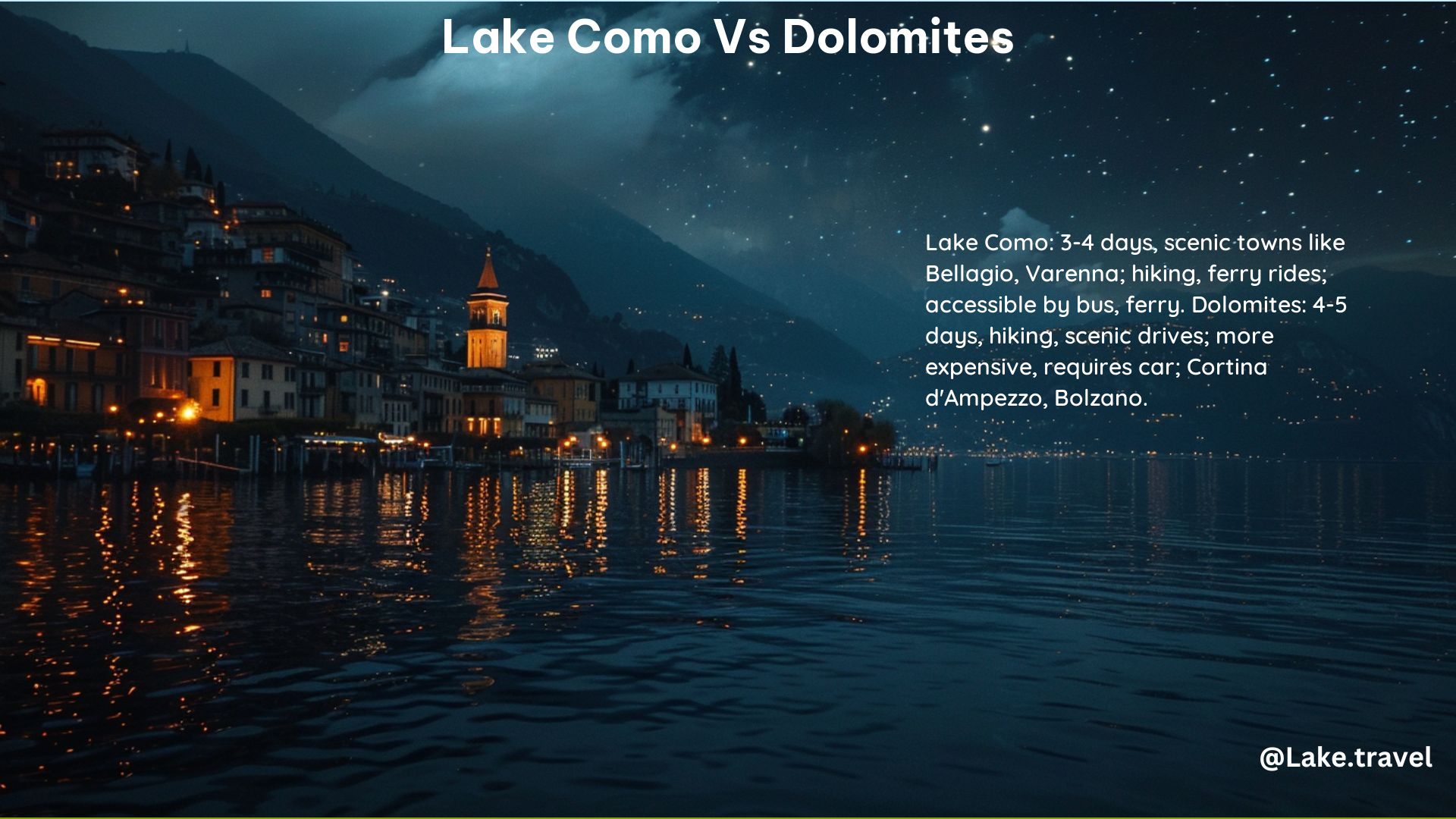Lake Como and the Dolomites are two of Italy’s most captivating destinations, each offering a unique experience for lakes touring enthusiasts. Whether you’re drawn to the serene waters of Lake Como or the majestic peaks of the Dolomites, this comprehensive guide will help you decide which destination best suits your travel preferences.
Location and Accessibility
Lake Como: Nestled in the Lombardy region, Lake Como is easily accessible by train from Milan (approximately 35 minutes) and Venice (approximately 4 hours). The nearest airport is Milan Malpensa (MXP), which is about an hour and a half from the lake.
Dolomites: The Dolomites are situated in the northeastern part of Italy, primarily accessible by car or bus. The nearest airport is Venice Marco Polo (VCE), which is about a 2-hour drive to the Dolomites. Alternatively, you can take a train to Bolzano and then transfer to a bus or taxi.
Cost and Accommodation

Lake Como: Lake Como is generally less expensive than the Dolomites, especially when it comes to accommodation. You can find a range of options from budget-friendly hotels to luxury villas. Prices vary depending on the season, with peak season being June to September.
Dolomites: The Dolomites, particularly the Bolzano area, are considered one of the more expensive parts of Italy. Accommodation prices are higher, especially in popular towns like Cortina d’Ampezzo. However, staying in smaller towns nearby can be more affordable.
Activities and Hiking
Lake Como: Lake Como offers a variety of activities such as boat rides, hiking, and water sports. The surrounding mountains provide opportunities for moderate hiking, with trails like the Grignetta and Resegone offering scenic views.
Dolomites: The Dolomites are renowned for their challenging and scenic hiking trails. The region offers a wide range of hiking options, from easy day hikes to multi-day treks. However, having a car is highly recommended to access the more remote trails.
Weather and Season
Lake Como: Lake Como has a mild climate, with warm summers and cool winters. The best time to visit is from April to October, with peak season being June to September.
Dolomites: The Dolomites experience a mountain climate, with cold winters and mild summers. The best time to visit is from June to October, with peak season being July to September. Weather can be unpredictable, especially in the mountains, so it’s essential to pack accordingly.
Cultural Experience
Lake Como: Lake Como offers a traditional Italian experience, with many towns and villages maintaining their historic charm. You can enjoy local cuisine, visit historic villas, and explore the lakeside towns.
Dolomites: The Dolomites have a unique cultural blend of Italian, Austrian, and German influences. You can experience this mix in the local cuisine, architecture, and festivals. However, the region is more mountain-oriented, and the cultural experience may differ from the traditional Italian experience.
Itinerary Suggestions
Lake Como: Spend 3-4 days exploring Lake Como, with a base in Varenna or Bellagio. Take boat rides, hike in the surrounding mountains, and visit local towns and villas.
Dolomites: Spend 4-5 days exploring the Dolomites, with a base in Bolzano or Cortina d’Ampezzo. Hike in the mountains, visit local towns, and experience the unique cultural blend of the region.
In summary, Lake Como offers a more relaxed, water-centered experience with easier accessibility and a traditional Italian atmosphere, while the Dolomites provide a more mountain-oriented experience with challenging hiking trails and a unique cultural blend, but require more planning and a car for optimal exploration.
Reference:
– Lake Como Travel Guide
– Dolomites Travel Guide
